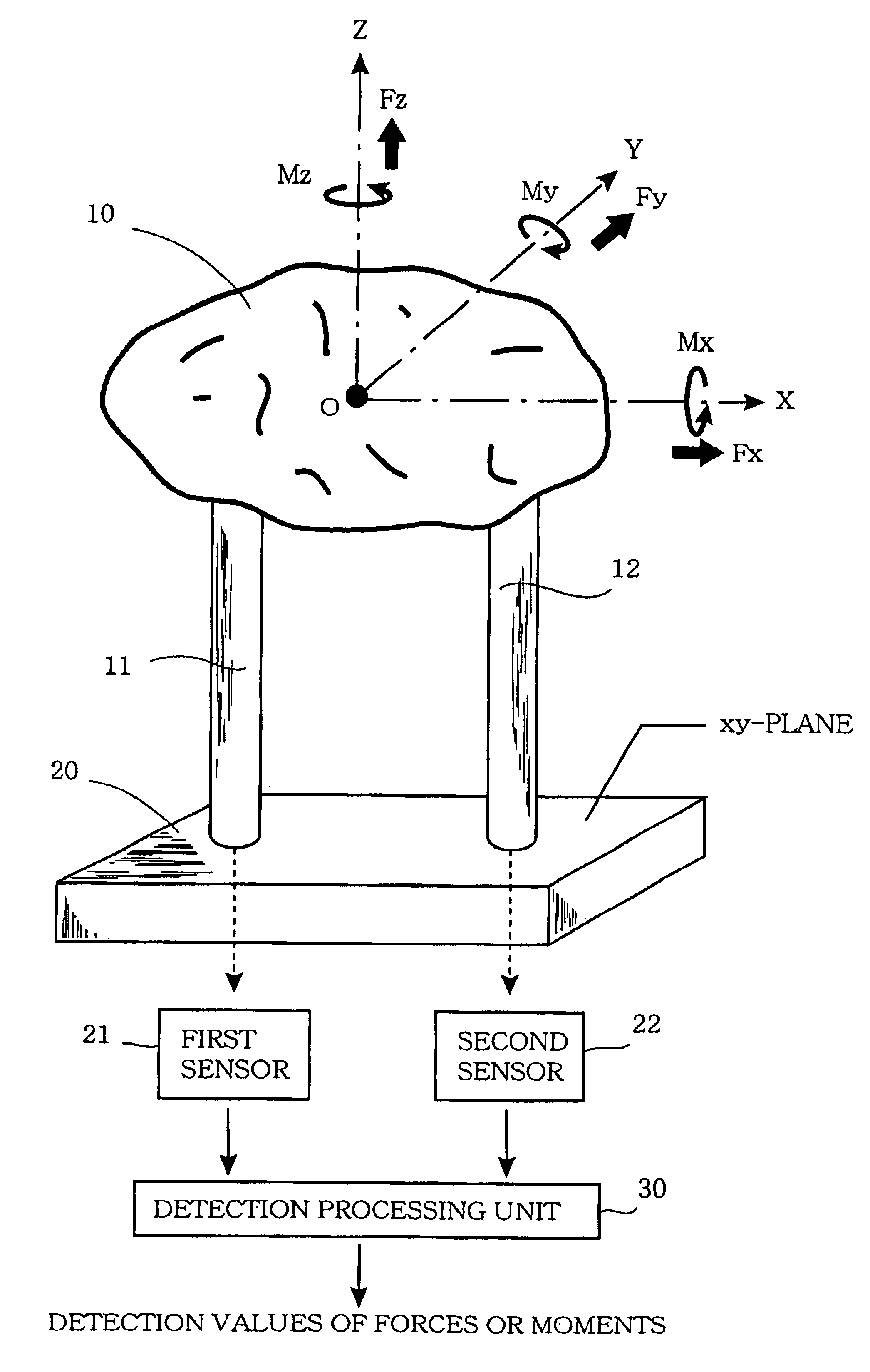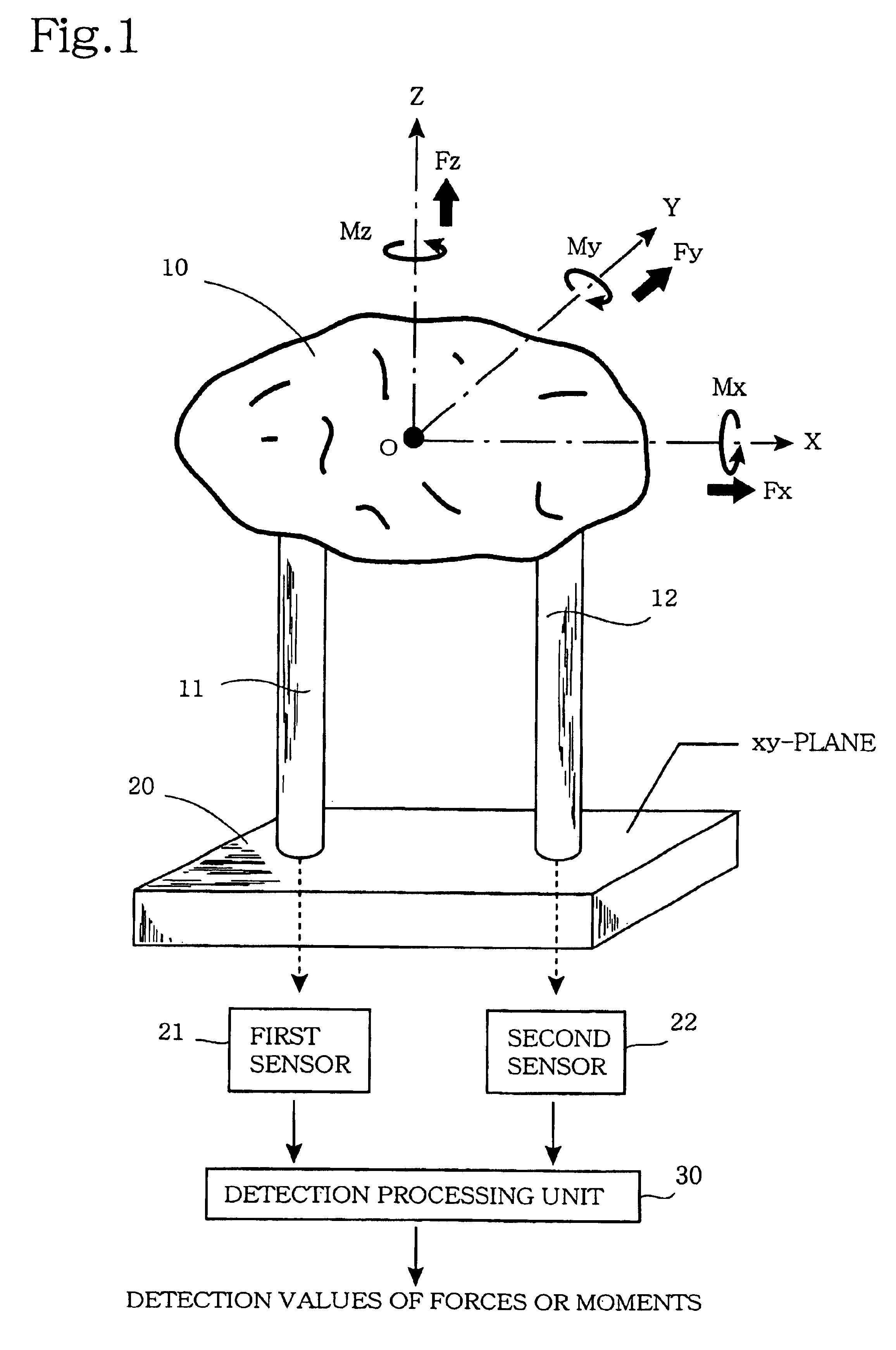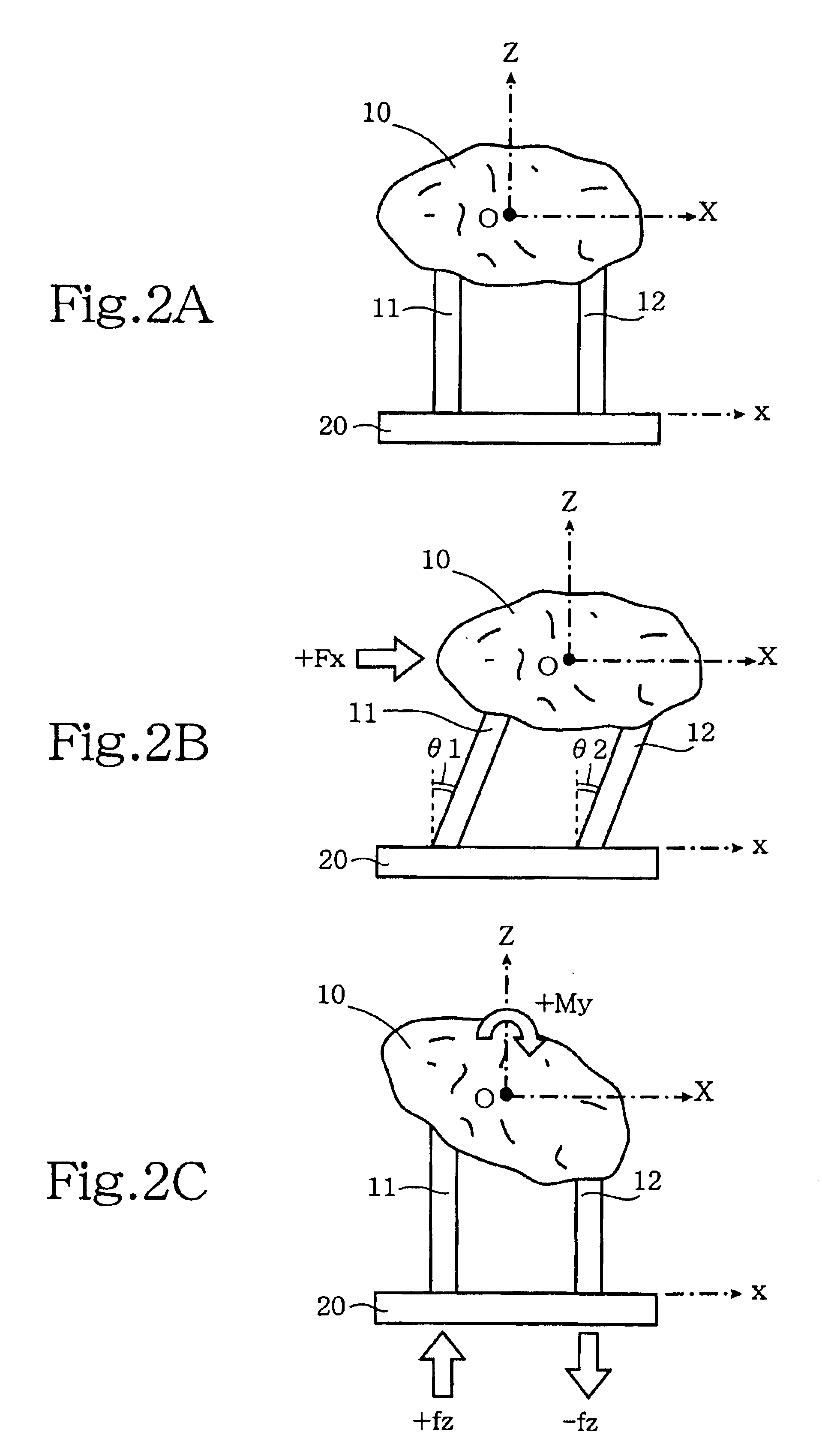Force detection device
a detection device and force technology, applied in the direction of stringed rackets, instruments, apparatus for force/torque/work measurement, etc., can solve the problem of a complex three-dimensional problem
- Summary
- Abstract
- Description
- Claims
- Application Information
AI Technical Summary
Benefits of technology
Problems solved by technology
Method used
Image
Examples
first embodiment
>>
[0316]The major structural parts of a force detection device of a first embodiment of this invention shall now be described using FIGS. 9 to 12 and furthermore, the operation principle of this device shall be described using FIGS. 13 to 15.
[0317]FIG. 9 is a side view in section across the XZ plane showing the major structural parts of the force detection device of this first embodiment, and FIG. 10 is a top view of this device. As shown in FIG. 9, the basic components of this force detection device are a force receiving member 100, an intermediate member 200, and a supporting member 300, and the basic form of each of these is a plate-like member having a top surface of square shape.
[0318]As shown in FIG. 10, force receiving member 100 is basically a plate-like member having a top surface with a square shape and having two cylindrical protruding parts 110 and 120 extending downwards from the bottom surface. FIG. 11 is a transverse section along the XY plane of force receiving membe...
second embodiment
>>
[0350]A force detection device of a second embodiment of this invention shall now be described. FIG. 16 is a top view of the major structural parts of the force detection device of this second embodiment, and FIG. 17 is a side view in section along line 17-17 of the force detection device shown in FIG. 16. The section along line 9-9 of the force detection device shown in FIG. 16 is the same as FIG. 9. A difference with respect to the above-described force detection device of the first embodiment is that four columnar force transmitting members are provided, and besides this, the structure and materials are exactly the same as those of the force detection device of the first embodiment. That is, the overall device is arranged as a structure comprising a plate-like force receiving member 100, an intermediate member 200, and a supporting member 300, each having a top surface with a square shape.
[0351]As shown in the top view of FIG. 16, force receiving member 100 is basically a plate...
third embodiment
>>
[0371]A force detection device of a third embodiment of this invention shall now be described. Like the above-described force detection device of the second embodiment, the force detection device of the third embodiment performs detection using four columnar force transmitting members and four sensors S1 to S4. However, the present embodiment differs slightly in the positioning of the four columnar force transmitting members. A description shall now be provided concerning just this difference.
[0372]FIG. 21 is a top view of a supporting member 300 used in the force detection device of the third embodiment. A comparison with FIG. 18, which is a top view of supporting member 300 used in the above-described force detection device of the second embodiment, clearly shows the differences between the two. That is, as shown in FIG. 18, with the second embodiment, fixed electrodes E11 to E15, E21 to E25, E31 to E35, and E41 to E45, which are components of the four sensors S1 to S4, are resp...
PUM
| Property | Measurement | Unit |
|---|---|---|
| force | aaaaa | aaaaa |
| flexibility | aaaaa | aaaaa |
| force transmitting | aaaaa | aaaaa |
Abstract
Description
Claims
Application Information
 Login to View More
Login to View More - R&D
- Intellectual Property
- Life Sciences
- Materials
- Tech Scout
- Unparalleled Data Quality
- Higher Quality Content
- 60% Fewer Hallucinations
Browse by: Latest US Patents, China's latest patents, Technical Efficacy Thesaurus, Application Domain, Technology Topic, Popular Technical Reports.
© 2025 PatSnap. All rights reserved.Legal|Privacy policy|Modern Slavery Act Transparency Statement|Sitemap|About US| Contact US: help@patsnap.com



